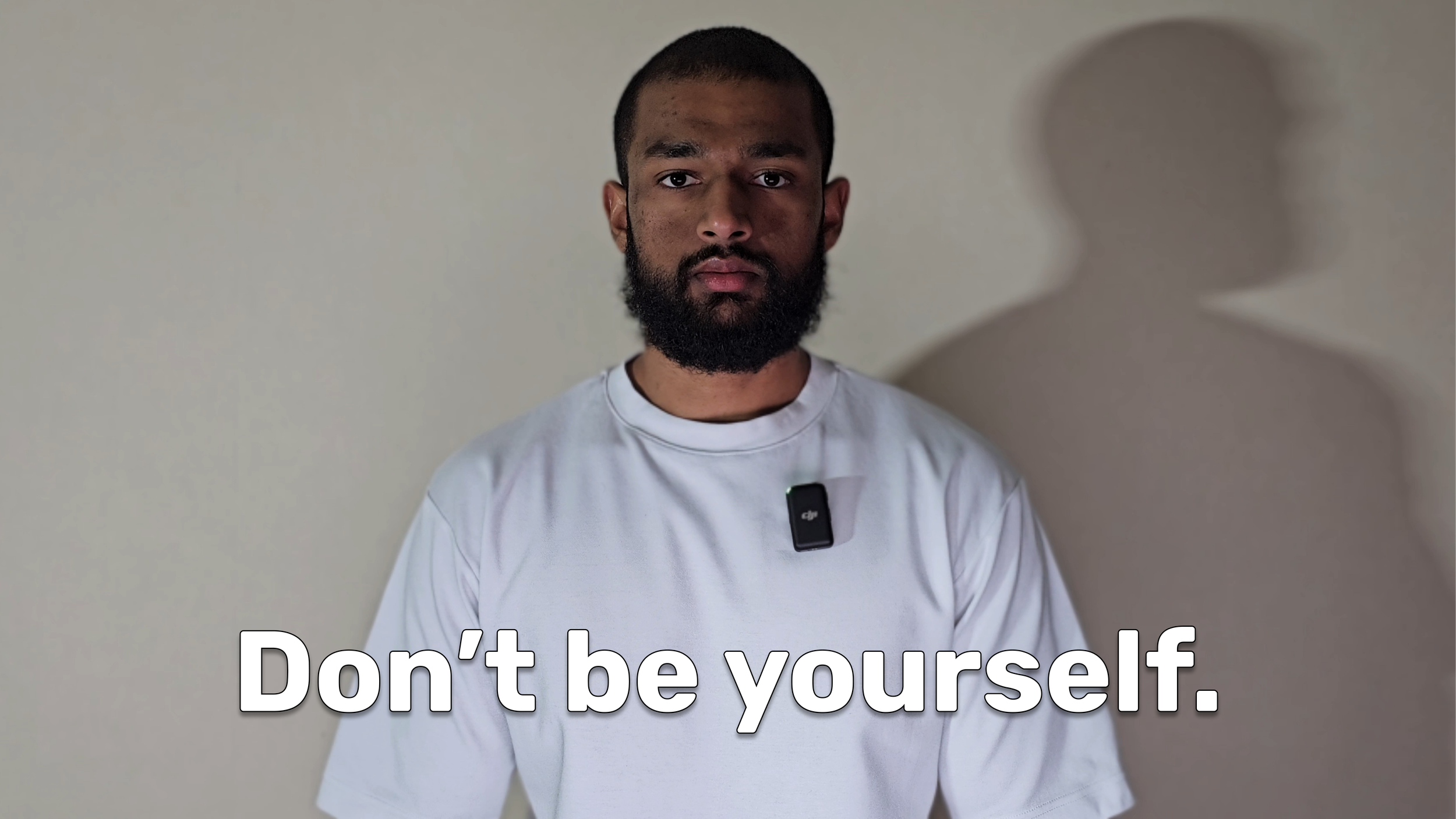Stop Trying to Be Someone (Including Yourself)
Freedom doesn’t come from becoming someone. It comes from letting go of the need to be anyone.
That story you keep telling yourself — the one that says you’re insecure, the one that says you’re confident, the one that says you can or you can’t — it’s not real. It’s all in your head. And it’s holding you back. Most people don’t like who they are. Being themselves didn’t get them what they wanted, so they became someone else. Eventually, they get tired of the act. They try to be themselves again, locking themselves back into a story that keeps them stuck. The issue isn’t with acting. It’s with believing there’s a self to begin with.
Self-Reject
The Self-Reject rejects who he is. He tried to be himself, but it didn’t get him the results he thought he wanted — to be in shape, to make money, to not feel alone. He believes his past is who he is. All the memories he’s not proud of replay in his mind, reinforcing his insecurities. Feeling stuck in who he is, he becomes someone new. He adopts a different identity, with different habits, copying the people who have the things he wants. He thinks results will fix him — that they’ll overwrite the story in his head, that they’ll change how he feels. And for a while, it works. He gets the approval and the validation. But the insecurities are still there. If anything, he believes in them more — because they’re the fuel that got him his success. So he keeps rejecting who he was. It pushes him to keep chasing. And now he’s stuck, trying to bury a story that only ever existed in his own head. His identity becomes the one who chases. But that person is never enough.
Self-Belief
The Self-Belief likely rejected who he was before, became someone new, and now believes that’s who he is. He holds onto his past — not the old identity, but the story of change. He clings to the identity of someone who overcomes. Someone who’s capable. Someone who’s driven. Now he needs to validate that story. So he creates plans for the future. Goals he believes in. Visions he attaches to. He’s driven by pressure. Because if he fails now, the self-image cracks. And it does — because the future is uncertain. Failure is just as possible as success. But he can’t afford to think that way. He is the one who wins. He has to be. He needs to be. That identity becomes another cage. His old identity trapped him in inaction. This one traps him in the chase.
Self-Less
The Self-Less doesn’t believe in himself, and he doesn’t reject himself either, because he knows there’s no self to begin with. He’s seen through the illusion. Thoughts aren’t real. Memories aren’t real. Plans for the future aren’t real. They’re just the mind grasping for a story — something to hold onto, something to make life feel like it has order. But even chaos is a human construct. There is order. The mind just can’t perceive all the variables, so it feels like uncertainty. It feels like chaos. Knowing this, he doesn’t try to hold on. He lets go. Thoughts still arise. Memories still arise. Plans still arise. But he doesn’t give them weight. He moves through life — wherever it takes him. Which is what everyone is doing, whether they believe it or not. The difference is: the Self-Less doesn’t deny that truth. He accepts it. And because of that, he has what everyone else is chasing — by letting go of the chase.
Final Thoughts
You were never the story in your head. Not the failure. Not the success. Not the one who gave up, and not the one who fought through. There is no you. Holding on to identity is the root of suffering. But letting it go is painful — because identity offers comfort, purpose, and control. Seeing it as an illusion means losing everything. But it’s the truth. And accepting it gives you the one thing identity will always chase but never find: peace.

